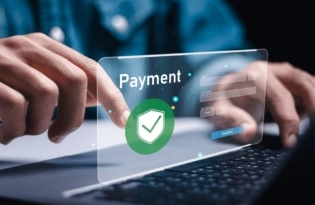An 8-point Checklist for Finding the Best Payment Provider
There’s huge potential to expand into ASEAN markets. But only for online sellers that accept local payment methods. Finding a trusted payment solution can be a worry and a challenge. Use this checklist to vet potential payment partners. With the right payment support, the sky’s the limit!

The Asia Pacific Seller’s Guide to Payment Solutions
Are you ready to expand your business to new markets globally?
Online sellers in the Asia Pacific have massive potential to grow their global sales. However, if you can’t accept local payments, you’ll miss out on opportunities.
To expand your cross-border ecommerce business, you must find a way to accept local payment methods – affordably – or risk losing sales to competitors who can.
How should you go about finding safe and secure ways to accept local payments in multiple currencies without the need for a local entity, bank account or merchant account in each market?
8 questions to ask your prospective Payment Service Provider
If you’re a fast-growing e-commerce business in Asia Pacific, use these questions as a checklist to select a Payment Service Provider (PSP) to help you expand into new markets.
How can you help my business grow and scale globally?
A PSP should be your partner in growing your business and expanding your business internationally. Do they have an established network in key markets to help you expand?
Is your solution ready today to manage digital payments end-to-end?
Consider your current and future needs. You’ll need to integrate your new payment solution with your existing systems and ramp up fast to accept local payments without added complexity or delay.
How can you help me deploy payment solutions faster, with less in-house development and zero maintenance costs?
You need a partner that’s going to help you grow your business in new markets – quickly and at a lower cost than building on your own. Your PSP should help you receive payments from customers, manage currencies, and pay suppliers and remote employees in each market.
Can you optimize payment acceptance and conversion without us needing to start new entities in local markets?
Setting up entities in each new jurisdiction can be costly and time-consuming. Your PSP should optimize local payment acceptance and conversion for you.
Do you provide key data analytics to help me make better decisions?
Your PSP should also be able to provide tools and data analytics to help you optimize business performance.
Do you offer best-practice checkout and payment flows for a better customer experience?
Your PSP must provide your customers with a smooth checkout process that allows them to pay online with credit cards and other popular local and international payment methods.
How can you help me reduce the complexity of dealing with the payment landscape?
The increasing number of payment providers and channels makes it technically challenging to manage and harmonize different integrations. By unifying your payment provider, you can reduce complexity and achieve greater control over your business.
Can you ensure we’re compliant?
When processing credit card payments, it’s critical for your PSP to be compliant with the latest version of 3D Secure and to offer flexibility to allow you to process a higher volume of payments.
APAC markets overview
South Korea
Consumers in South Korea are prolific users of payment cards with an average of 5.5 cards per person in 2021.
Japan
Cash accounted for 71% of overall payment volume in Japan in 2020 but electronic transactions are increasing quickly with an improved payment infrastructure.
China
China is the world’s largest payment card market with a transaction value of $19.3tn in 2020.
Hong Kong
The payment card market in Hong Kong is mature with each individual holding more than three cards in 2021.
Taiwan
Cash accounted for 49% of total transaction volume in 2021. However, Taiwanese consumers are increasingly adopting the use of payment cards.
Singapore
Singapore’s payment card market between 2016–20 witnessed the rise of contactless payments, a surge in credit/charge card payments, and increasing use of mobile wallets.
Malaysia
The Malaysian payments market has high growth potential as it shifts towards digital payments. Card-based payment transactions grew at a 21% CAGR from 2017–21.
Thailand
The use of payment cards has been growing in line with rising awareness of electronic payments and an increase in the country’s banked population.
Indonesia
Cash accounted for 86% of total payment transaction volume in Indonesia in 2021, but the pandemic highlighted the importance of non-cash payment methods and electronic payments.
Vietnam
The introduction of mobile branches in remote locations, the rise of digital-only banks, and the emergence of payment card technologies are supporting a rise in electronic payments in Vietnam.
The Philippines
Cash accounted for 98% of the Philippines’ total payment transaction volume in 2020. However, government efforts are aimed at reducing the share of cash transactions by 2024.
Australia
Growth in Australia’s payment market has been characterized by the rise of contactless payments, growth in debit card usage, and the emergence of digital wallets.
New Zealand
The payment card market in New Zealand is mature, with each individual holding over three cards in 2021 and successful efforts to encourage consumers to use electronic payments.
Source: GlobalData, 2021-22
Payoneer can help online sellers in Asia Pacific expand into new markets.
As a seller expanding into overseas markets, you want the payment experience to be simple, seamless and secure for your buyers, allowing them to pay in their local currency. And you don’t want payment processing fees and foreign currency exchange rates to cut into your profit margin.
Piecing together your own payment infrastructure by outsourcing to multiple PSPs can get very complicated, very fast.
Our local payment solutions combine the best of both worlds: Avoid managing all the complexity while experiencing the benefits of having a local payment solution in new markets where you want to expand your business.
Take your online store to the next level with Payoneer Checkout
Maximize growth: Provide customers with a smooth checkout experience on web, mobile, and tablet. Grow revenue with high global acceptance rates
No hidden fees: Enjoy 100% transparent pricing and save money on conversion fees with no hidden surprises.
Manage everything in one place: Save time and money with full visibility of your earnings and enjoy end-to-end solutions to use your funds flexibly.
Related resources
Latest articles
-
A guide to starting a business in Estonia as a non-citizen
If you’ve thought about opening a new business somewhere with plenty of government support, expanding your business into the EU, or making it easier to work as a contractor or digital nomad anywhere in the European Economic Area (EEA), you should think about starting a business in Estonia…
-
How to simplify payment operations with Payoneer’s automation feature
Save time, reduce costs, and eliminate errors with Payoneer’s new payment automation feature.
-
How to prevent online payment fraud as an SMB
Prevent online payment fraud by overcoming challenges like phishing, fake accounts, and account takeovers (ATO) with enhanced security features from Payoneer.
-
Amazon Fees & Policy Updates 2024
Amazon regularly makes planned updates to fees and policies that may impact Payoneer customers that sell on Amazon. To keep Payoneer customers informed regarding upcoming and past updates, we’re providing a list of known changes to Amazon fees and Policy updates.
-
How Payoneer’s target exchange rate feature will help you save more on bank withdrawals
Boost savings with Payoneer’s target exchange rate feature.
-
Navigating phishing attacks: A guide to keeping your Payoneer account secure
Keeping your funds safe is our number one priority at Payoneer. While phishing attempts can happen, arming yourself with knowledge is key to keeping your data and money safe














